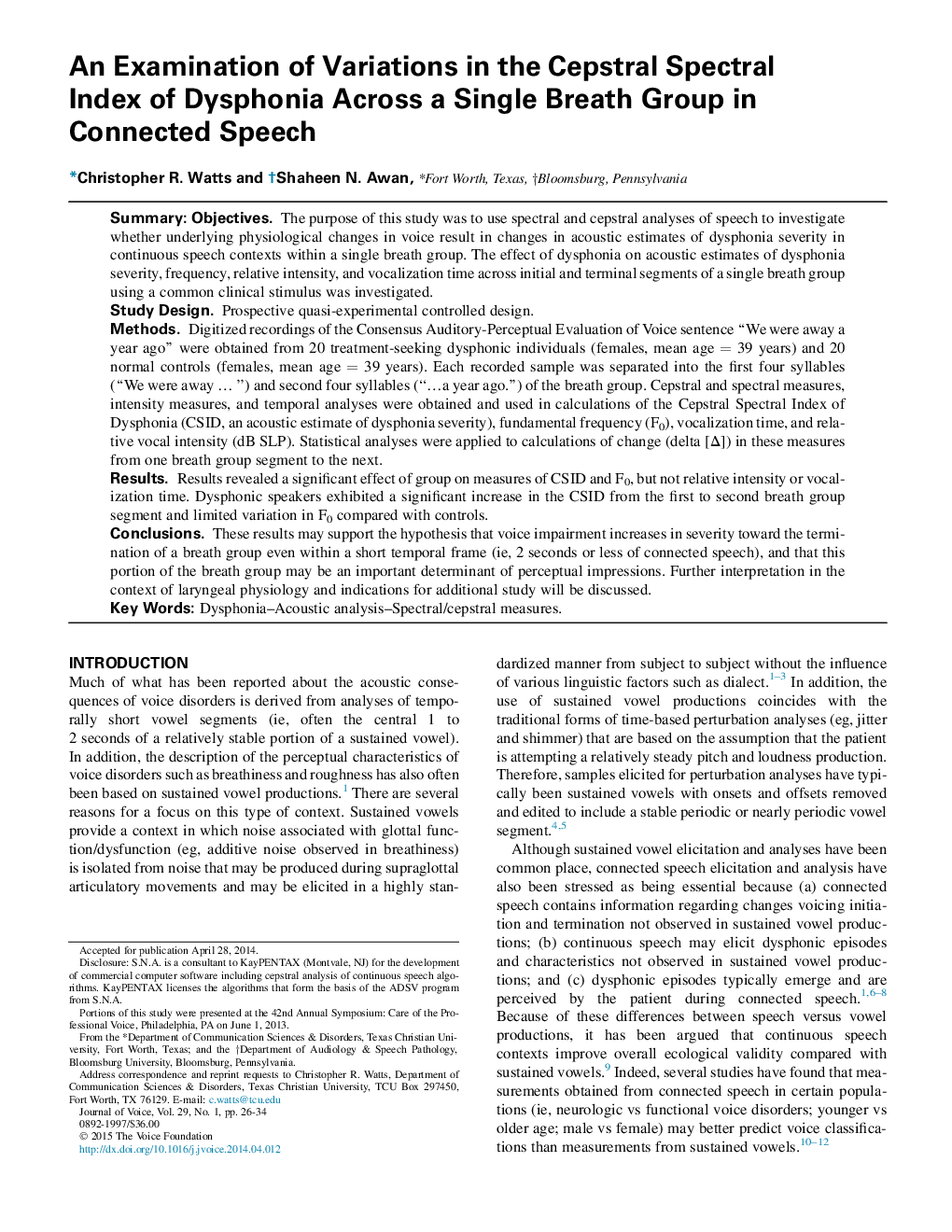| Article ID | Journal | Published Year | Pages | File Type |
|---|---|---|---|---|
| 1101501 | Journal of Voice | 2015 | 9 Pages |
SummaryObjectivesThe purpose of this study was to use spectral and cepstral analyses of speech to investigate whether underlying physiological changes in voice result in changes in acoustic estimates of dysphonia severity in continuous speech contexts within a single breath group. The effect of dysphonia on acoustic estimates of dysphonia severity, frequency, relative intensity, and vocalization time across initial and terminal segments of a single breath group using a common clinical stimulus was investigated.Study DesignProspective quasi-experimental controlled design.MethodsDigitized recordings of the Consensus Auditory-Perceptual Evaluation of Voice sentence “We were away a year ago” were obtained from 20 treatment-seeking dysphonic individuals (females, mean age = 39 years) and 20 normal controls (females, mean age = 39 years). Each recorded sample was separated into the first four syllables (“We were away … ”) and second four syllables (“…a year ago.”) of the breath group. Cepstral and spectral measures, intensity measures, and temporal analyses were obtained and used in calculations of the Cepstral Spectral Index of Dysphonia (CSID, an acoustic estimate of dysphonia severity), fundamental frequency (F0), vocalization time, and relative vocal intensity (dB SLP). Statistical analyses were applied to calculations of change (delta [Δ]) in these measures from one breath group segment to the next.ResultsResults revealed a significant effect of group on measures of CSID and F0, but not relative intensity or vocalization time. Dysphonic speakers exhibited a significant increase in the CSID from the first to second breath group segment and limited variation in F0 compared with controls.ConclusionsThese results may support the hypothesis that voice impairment increases in severity toward the termination of a breath group even within a short temporal frame (ie, 2 seconds or less of connected speech), and that this portion of the breath group may be an important determinant of perceptual impressions. Further interpretation in the context of laryngeal physiology and indications for additional study will be discussed.
